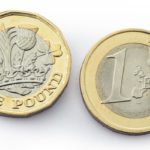 Gold fell as prices surged yesterday by the most in three weeks, which lured some investors to sell the precious metal, clustering sell orders. Speculations arose again that better-than-expected data due later today and tomorrow may prompt the Federal Reserve to taper stimulus. Assets in the SPDR Gold Trust, the biggest bullion-backed ETF, were further reduced to the lowest since January 2009, adding to bearish sentiment. A weaker dollar relieved some pressure on the metal.
Gold fell as prices surged yesterday by the most in three weeks, which lured some investors to sell the precious metal, clustering sell orders. Speculations arose again that better-than-expected data due later today and tomorrow may prompt the Federal Reserve to taper stimulus. Assets in the SPDR Gold Trust, the biggest bullion-backed ETF, were further reduced to the lowest since January 2009, adding to bearish sentiment. A weaker dollar relieved some pressure on the metal.
On the Comex division of the New York Mercantile Exchange, gold futures for settlement in February fell by 1.15% on daily basis to $1 232.80 per troy ounce by 08:50 GMT. Gold prices swung between daily highs and lows of $1 241.10 and $1 234.40 per troy ounce, respectively. Gold plunged 5.3 percent in November, the most since June when prices touched a 34-month low of $1 180.50 per troy ounce, and the biggest drop for a November since 1978.
The precious metal has fallen 27% so far this year and is heading for the first annual drop since 2000 as investors lost faith in the metal as a store of value amid a rally in U.S. equities to a record and muted inflation.
Fed stimulus outlook
Yesterday, a report by ADP showed that US private employers added more jobs than expected in November, arousing speculations that the non-farm payrolls data, due tomorrow may tempt the Fed to cut its $85 billion bond purchasing program earlier than expected.
Analysts projections show the Labor Department may report tomorrow that employers added 185 000 workers in November, after rising to 204 000 the previous month. This will be the largest annual gain in payrolls since 2005. Meanwhile, the unemployment rate is projected to lower to 7.2%, the same rate as in September and the lowest since November 2008.
Steven Dooley, head of research at Forex Capital Trading Pty, referring to the level where sell orders are concentrated, said, cited by Bloomberg, “It’s come right back up to that major resistance level between $1,250 and $1,255, so we’re going to take that as an opportunity to sell, quantitative easing and when that is being tapered is still very important to the market”.
The FOMC’s October meeting minutes pointed that Federal Reserve officials may reduce their $85 billion in monthly bond purchases “in coming months” as the economy improves. Central bankers are set to reconvene on December 17-18th.
Last month, a survey by Bloomberg revealed that the Fed will probably trim its asset purchases to $70 billion from $85 billion at its March 18-19th meeting.
A weaker dollar relieved some pressure on gold. The U.S. dollar index, which measures the greenback’s performance against a basket of six major peers, was down by 0.12% on Thursday to reach 80.52 at 08:51 GMT. The December contract held in a day’s range between 80.67 and low of 80.39 and was down 0.2% weekly basis. The index settled last week mostly unchanged after falling by 0.75% in the preceding two weeks. Weakening of the dollar makes commodities priced in it cheaper for foreign currency holders and boosts their appeal as an alternative investment.
Assets in the SPDR Gold Trust, the biggest bullion-backed ETF, were further reduced to 838.71 tons on Wednesday, the lowest since January 2009. Outflows have totaled nearly 468 tons this year. Billionaire hedge-fund manager John Paulson who holds the biggest stake in the SPDR Gold Trust told clients on November 20 that he wouldn’t invest more money in his gold fund because it isn’t clear when inflation will accelerate. US inflation is still well below the Fed target of 2.00%.





